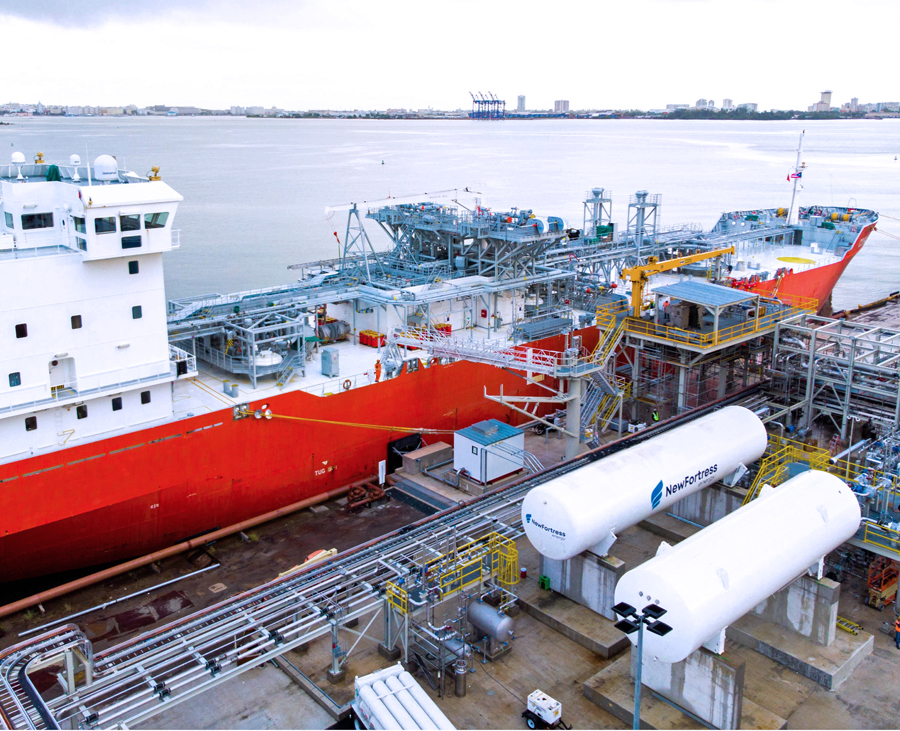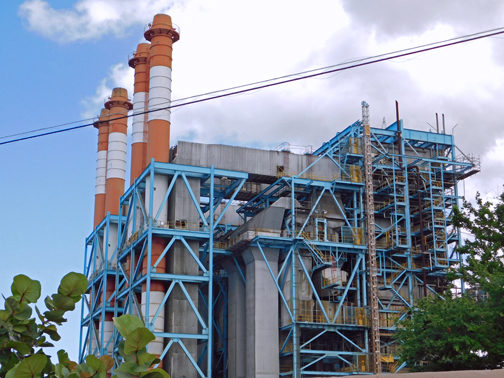Op-Ed: PREPA continues to pursue natural gas plans with federal funding

In August 2020, the Puerto Rico Energy Bureau approved a long-term plan for the island’s electrical system that called for greater investments in renewable energy and storage. The bureau worked for months to integrate analysis from a variety of stakeholders and eventually rejected new natural gas initiatives because of their costs and logistical challenges.
Yet last month, the Puerto Rico Electric Power Authority (PREPA) released a 10-year plan for how it plans to spend over $10 billion in Federal Emergency Management Agency (FEMA) funds — and included plans to build more natural gas plants, with no investments in renewable energy.
The PREPA plan includes more than $850 million in federal funds for a 400-megawatt (MW) combined-cycle natural gas plant near San Juan and 11 new 30MW peaker plants distributed across five locations.
The PREPA plan, however, is short on key details, including how natural gas would be delivered to the plants. It skips any explanation of how the New Fortress Energy natural gas import facility in San Juan will deal with a federal investigation into how it was built without authorization by the Federal Energy Regulatory Commission.
Finally, the plan fails to explain how the projects can be funded with money from Section 404 of the Stafford Act, which governs hazard mitigation and can only be used for new power generation “if the generator protects a critical facility,” which is not the case for the proposed projects.
In a hearing before the Puerto Rico Energy Bureau on Monday, PREPA officials confirmed that FEMA has approved PREPA’s plans to use federal money for these new natural gas plants. A Bureau Commissioner noted that it was “absolutely perplexing” that PREPA was presenting a plan that is not aligned with the Bureau’s approved plan, which PREPA is legally obligated to follow.
Both PREPA and the U.S. Department of Energy have a history of pushing natural gas infrastructure in Puerto Rico. In April 2019, a top Energy Department official urged the construction of a 1,200 to 1,600 MW natural gas plant at Palo Seco, near San Juan. PREPA, meanwhile, pushed for a smaller, 302 MW plant at Palo Seco in its long-term plan submitted to its regulator, the Puerto Rico Energy Bureau, in 2019.
The Energy Bureau rejected the plan, citing “the additional risk of potentially higher LNG infrastructure costs associated with a land-based LNG terminal in the north and a new CCGT (combined cycle gas turbine) at Palo Seco.”
It ordered PREPA to focus on renewable energy and storage resources instead, although it allowed $5 million for preliminary permitting and studies as a hedge against possible rising solar and battery storage prices.
PREPA also pushed for 18 new 23MW natural gas peaker plants. In rejecting the proposal, the Energy Bureau ordered PREPA to explore other sources of peaking generation and grid services that would compete with the fossil fuel-fired generators. It capped new fossil fuel capacity at 81MW, far less than the potential 414MW that would have been generated by the 18 new plants.
-

Cathy Kunkel ([email protected]) is an IEEFA energy analyst -

Tom Sanzillo ([email protected]) is IEEFA’s director of finance.
That order was not the end of it. Despite the Bureau’s rejection of PREPA’s plans for more than 700MW of new natural gas capacity, the projects have now resurfaced — with more than $850 million in federal funds backing them.
The choice between gas and renewable energy is not just a question of fossil fuel usage. PREPA’s fiscal plan has made it clear that the savings achieved from renewable energy is critical to its fiscal solvency.
And even if the bidding process for new natural gas infrastructure is carried out honestly (far from a guaranteed outcome if history is any guide), the use of money from the largest-ever federal investment in Puerto Rico’s electrical system for natural gas infrastructure ensures that the island’s grid would be a source of red ink for decades to come.








As a colony, we are forced to buy from the company store. And natural gas is the new currency for our self-centered politicians. This is going to cost us big time in a few years as our assets lose value and the cost of converting to renewables won’t be paid for by FEMA nor will they pay for decommissioning our huge collection of petroleum-based infrastructure. While other islands are working hard, investing in renewables, to make themselves resilient and self-sustainable, we in Puerto Rico are chaining ourselves to the anchor of old concepts for the benefit of powerful economic interests of the oil political-oil industry. We are doomed until we elect people who care more about Puerto Rico than lining their pockets.